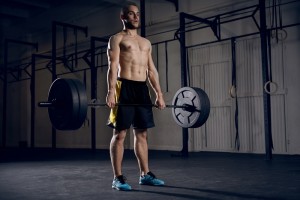Bilateral Deficit – Training Considerations
Exercise | Fitness | Personal Training | Running | Training
Posted on March 29, 2016 by Jenny Cromack
The bilateral deficit is an interesting phenomena by which the sum of force produced during unilateral exercise, such as a split squat, is greater than the sum of force produced during a bilateral lift (such as a conventional back squat). It appears that the bilateral deficit or indeed bilateral facilitation is associated with training habits, i.e those that train using more unilateral lifts appear to display greater levels of a bilateral deficit, whereas those that train using bilateral lifts tend to demonstrate bilateral facilitation. This has huge implications for individuals involved in sport or individuals who wish to complete day to day tasks at ease.
This doesn’t mean that you should train one or the other exclusively, in fact this simply compounds the problem, one way or another. We must use phases of bilateral and phases of unilateral training to reach top performance in the gym.
For individuals involved in sports or activities such as running, tennis, or team sports you need to build a strength base, this is best achieved through bilateral compound exercises. as greater stimulation of the neural system can be achieved with greater total load. As you near important races, events or competition periods you should move your training to more unilateral movement patterns.
Example 6 months training leading upto a 10k race
- Month 1-2: Compound bilateral (example session below)
- Back Squat 5 sets 5 reps
- Romanian deadlift 3 sets 5 reps
- Chin ups 3 sets 5 reps
- Glute bridge loaded 3 sets 8 reps
- Barbell rollout 3 sets 8 reps
- Month 3-4: Compound combination bilateral and unilateral (example session below)
- Bulgarian split squat 4 sets 5 reps per leg
- Nordic hamstring curls 4 sets 5 reps
- Chin ups 4 sets 4 reps
- Split stance pallof press 3 sets 6 reps
- DB Shoulder press single arm (focus on trunk posture) 3 sets 6 reps
- Month 5-Race Unilateral focus (example session below)
- Pistol squat 5 sets 3 reps
- Single Leg DB RDL 4 sets 4 reps
- One arm DB rows 3 sets 5 reps
- Medicine ball one arm throw 3 sets 5 reps
Such a simple consideration can have a dramatic impact on your performance. If you’re simply training for strength, combinations of both bilateral and unilateral training will enhance strength much more effectively that one or the other.



